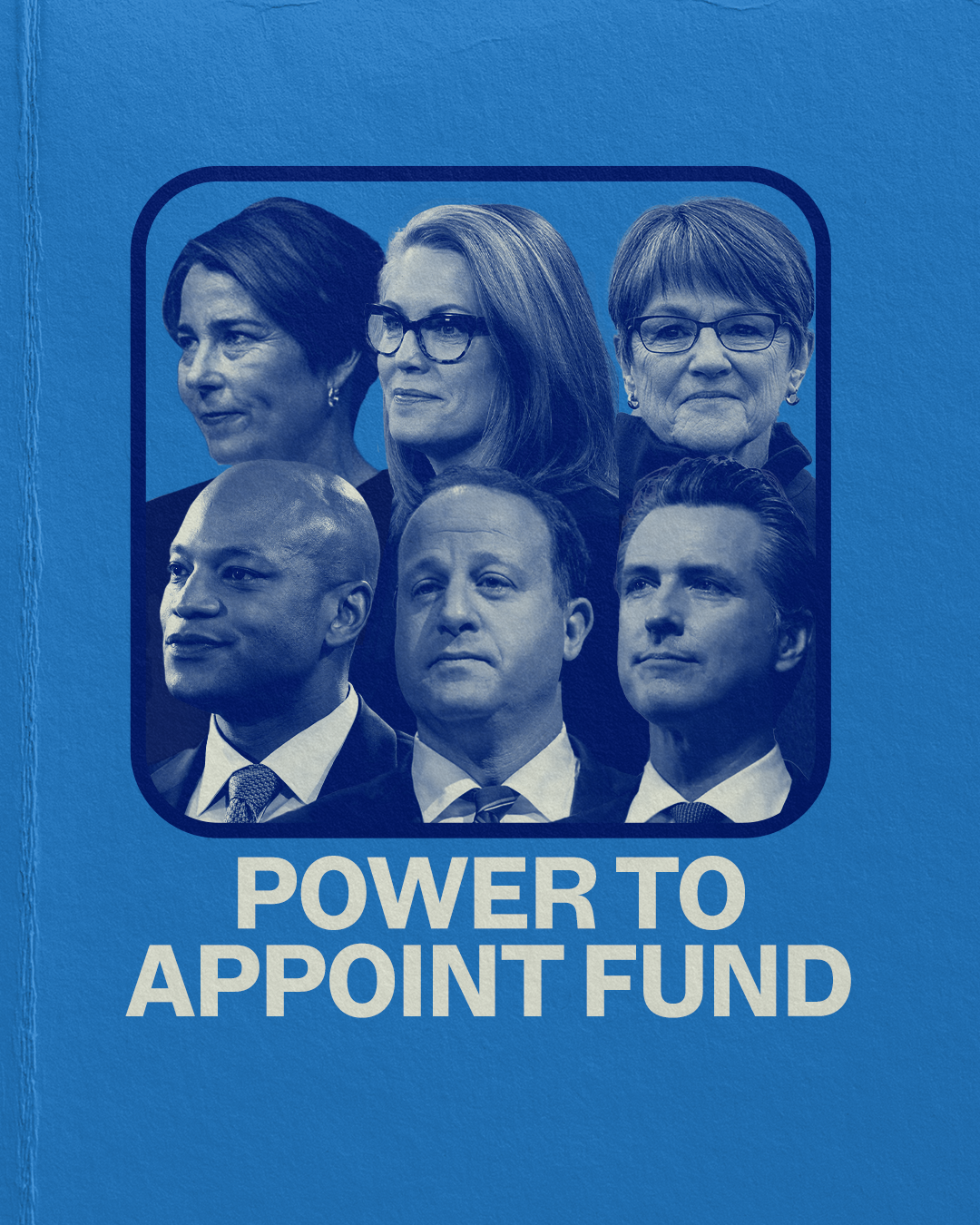
Can you donate now to join our fight?
We just launched the Power to Appoint Fund to highlight the important role Dem Govs play to ensure integrity in our country’s judicial process and protect fundamental freedoms. Your support will ensure we can make crucial investments in key states and protect our democracy. Please don’t wait: rush your gift to elect Democratic governors! >>>
ICYMI: North Carolina Gov. Roy Cooper Leading the Nation in Shrinking Racial Vaccine Gap
Democratic North Carolina Gov. Roy Cooper is leading the nation in equitable vaccine distribution. According to a Bloomberg report, North Carolina has been one of the best-performing states due to its “laser focus” on collecting demographic data – the state has racial data for 99.6% of the people it vaccinates.
Communities of color have been hit harder by the pandemic. Black Americans are “three times as likely to contract the coronavirus,” but remain one of the least vaccinated groups, with only 5.7% having received at least one dose of the vaccine.
Gov. Cooper has been committed to shrinking the racial vaccine gap, prioritizing vaccines for counties with higher concentrations of historically underserved populations. He told Axios last month that North Carolina is being intentional about distributing vaccines to communities of color: “It involves going into communities and working. And we’re working with our providers to get that done. And it’s one of the priorities that we’re emphasizing. You need to be doing this and being intentional about it.”
Read more about North Carolina’s laser focus on equitable vaccine distribution below.
Bloomberg: One U.S. State’s Laser Focus on Data Helps Shrink Racial Vaccine Gap
North Carolina is among the best-performing U.S. states when it comes to distributing vaccines evenly among Black and White residents. That’s partly because the state is by far the best at collecting demographic data.
About 11% of North Carolina’s Black population has received at least one shot, compared with 17% of the state’s White residents, the Bloomberg Vaccine Tracker shows. That puts North Carolina in fourth place for the smallest spread between the two groups among states with the most comprehensive data sets. Other states might be doing as well or better than North Carolina in terms of equality, though huge numbers of incomplete records obscure the national picture.
North Carolina’s success is no accident. The state made equity a priority early on, says Mandy Cohen, Secretary of the North Carolina Department of Health and Human Services. To receive shipments, every provider must use the state’s vaccine management system, which requires demographic data to finish registering someone for a shot. That has helped the state track its progress and target certain populations more effectively, Cohen says.
“The data is not just a nice-to-have, it’s a need-to-have in order to embed equity into every aspect of our response and now into vaccine operations,” says Cohen. Equitable distribution is particularly crucial as communities of color in the U.S. have borne a disproportionate share of the suffering during the crisis. Nationally, Black and Hispanic people are becoming infected one time the rate of White people and are dying at about two times the rate, according to data from the Centers for Disease Control and Prevention.
The Biden administration has repeatedly stressed the importance of distributing Covid-19 vaccines equitably, and it’s largely up to the states to figure out exactly how they want to do that. North Carolina started sending more shots to areas with higher concentrations of historically underserved populations in late January. It also reserves 15% of its doses for special events like community clinics, which have typically worked well in targeting those populations, and it carefully tracks its data, reserving the right to cut off supply to providers that aren’t meeting the goals.
Those data show clearly how well — and how poorly — the state is reaching certain groups. Of 1.5 million first doses administered, 77% have gone to White people. The group accounts for 71% of the total population. Black people have received 16% of the shots even though they represent 22% of the population, and one-quarter of the state’s Covid-19 deaths broken down by race. Just 3% of the shots have been administered to Hispanic people, who make up 10% of the state’s population and more than 20% of its coronavirus cases by ethnicity.
North Carolina’s struggle to reach Hispanic people illustrates the complexity of distributing shots equitably. When asked why the metrics for that group are falling short, the state cited “longstanding and continuing racial and ethnic injustices” for the gap. It’s pushing to mend that, but it has a long way to go: About 4% of first doses administered the week ending Feb. 21 were given to Hispanic people, up from about 2% the week ending Jan. 17. Age also may be a factor in the gap — generally, Hispanic people are a younger demographic than White or other racial and ethnic groups, which means that many wouldn’t have been eligible during early rounds of vaccination that targeted the oldest people.
Each week, North Carolina divides the doses it receives from the federal government across its 100 counties. The initial calculation is based on total population. Communities with higher numbers of historically marginalized populations receive more shots, Cohen says.
State health officials expect providers to inoculate people at rates reflective of the broader population, Cohen says. For example, if 35% of the residents in a county are Black, 35% of the shots a hospital or health department administers should be given to Black people. Those that don’t comply risk losing their supply. State leaders review and readjust the allocations every three weeks.
Julie Swann, a health-systems expert at North Carolina State University, has admired how her state has shrunk the gap between White and Black vaccination rates in recent weeks. Black people received 21% of first doses administered in the week ending Feb. 21, up from 14% the week of Jan. 25, according to the state. North Carolina’s transparency around the data has helped the state hold itself accountable, she says.
“You need data to know if a population is getting their fair share of vaccines,” Swann says. “If you don’t know a population is missing out, you don’t know you need to take action and deliver, distribute and administer vaccines in a different way.”
North Carolina has racial data for 99.6% of people who have gotten a shot in the state.
[…]
“We’ll never be perfect,” Cohen says. “But you can’t not ask the question.”

